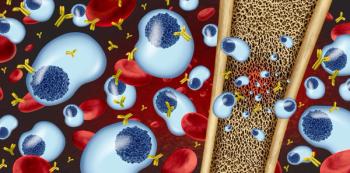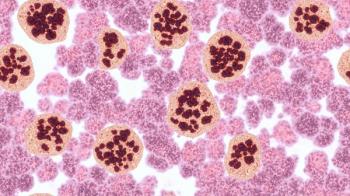
Rigorous Exercise Could Aid Rheumatoid Arthritis Pain
High-intensity interval training found to increase ’ maximum oxygen uptake and improve the heart recovery rate in RA patients.
Arthritis pain severity can be reduced with high-intensity training, such as cycling, according to a study published in the European Journal of Applied Physiology.
Researchers from the Norwegian University of Science and Technology studied seven women with rheumatoid arthritis (RA) aged between 20 and 50 years in order to examine the effects of high-intensity training on their arthritis pain, and to determine if these patients would tolerate exercise intensities above today’s general recommendations.
The researchers collected data about the patients’ maximum oxygen uptake, heart rate recovery, blood pressure, body composition, and blood variables before and after the exercise program, as well as information about disease activities via questionnaire.
The patients performed high-intensity interval training twice per week for 10 weeks on spinning bikes, consisting of four sessions of four minute intervals at about 85-95% of the maximum heart rate.
The patients performed high-intensity interval training twice per week for 10 weeks on spinning bikes. First, the patients warmed up for about 10 minutes at 70% of their maximum heart rates. Then, the patients completed four sessions of four minute intervals at about 85 to 95% of their maximum capable heart rates; the sessions lasted a total of about 35 minutes.
The researchers found that the high-intensity interval training produced a 12.2% increase in the patients’ maximum oxygen uptake and a 2.9 percent improvement in heart recovery rate.
Additionally, body mass index, body fat, and waist circumference in patients decreased by rates of 1.2, 1.0, and 1.6%, respectively. Muscle mass increased by 0.6 percent in the patients.
“Previously, studies have showed that moderate intensity work out sessions can help improve endurance without inducing pain or inflammation, or damaging joints,” researcher Anja Bye explained in a press release. “This is true regardless if you're sick or healthy, young or old. We wanted to see if patients with arthritis could handle high-intensity training and see the same positive effects.”
The researchers added that the study was too small to conclude anything concrete, but added that the exercise program might still be a good idea regardless. The group is working on a larger study for the future.
“The women who participated in the study found this to be a good, effective method of training, and are mostly very motivated to continue because of the progress they’ve seen,” Bye concluded.
Newsletter
Stay informed on drug updates, treatment guidelines, and pharmacy practice trends—subscribe to Pharmacy Times for weekly clinical insights.




















































































































































































































